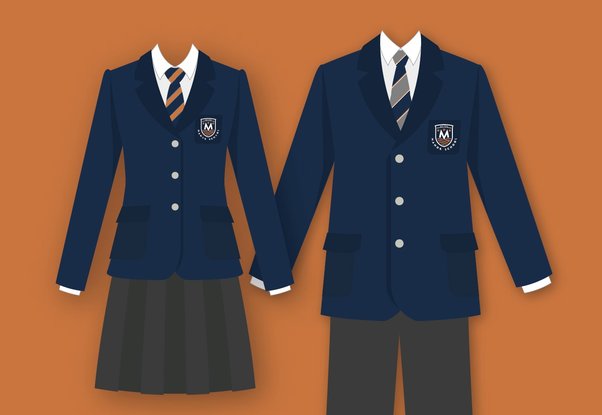The Importance of Uniform Designs in Various Fields

Uniform designs play a crucial role in various industries and sectors, ranging from sports teams to corporate organizations. These designs serve as more than just clothing; they embody identity, unity, and professionalism. Let’s delve deeper into the significance of uniform designs across different domains. Introduction to Dong Do Uniform
Dong Do uniforms with more than 1000 pre-designed models. help dog customers exercise. We are proud to be the most modelled unit in Vietnam
We are ready to assist you in designing the dongphucdongdo.com has template according to your requirements and ideas. We accompany you to create innovative products.
We own a completely closed factory. With modern technology and machinery will create quality products.
Establishing Identity:
Uniforms serve as a visual representation of a group’s identity. Whether it’s a sports team, a company, or a school, a uniform design helps establish a sense of belonging and unity among members. For example, when spectators see athletes donning their team’s colors and logos, they immediately recognize which team they belong to, fostering a sense of camaraderie among fans.
Promoting Team Spirit:
Uniform designs play a pivotal role in fostering team spirit and cohesion. When individuals wear the same attire, it creates a sense of equality and solidarity, regardless of differences in roles or backgrounds. This cohesion is particularly evident in sports teams, where players wear uniforms not only to identify themselves but also to symbolize their collective effort and commitment to achieving a common goal.
The Importance of Uniforms:
Uniforms serve multiple purposes beyond mere clothing. They foster a sense of belonging and unity among team members, employees, or members of an organization. In sports, uniforms not only identify teams but also evoke team spirit and pride among players and fans alike. In businesses, uniforms contribute to brand recognition and professionalism, reinforcing the company’s image.
Historical Evolution:
Uniform designs have a rich history dating back centuries. Initially, uniforms were primarily functional, designed for practical purposes such as distinguishing between friend and foe in battles. Over time, they became more elaborate, incorporating symbols of rank, allegiance, and identity. Military uniforms, for instance, evolved from simple garments to ornate attire adorned with insignias and medals, reflecting social status and hierarchy.
Sporting Uniforms:
In the world of sports, uniforms serve both functional and aesthetic purposes. They not only identify teams but also embody their spirit and tradition. Sporting uniforms have witnessed significant evolution, from basic jerseys to high-tech, performance-enhancing garments. Design elements such as colors, logos, and typography play a crucial role in creating iconic and memorable uniforms that resonate with fans and players alike.
Enhancing Brand Recognition:
In the corporate world, uniform designs are instrumental in enhancing brand recognition and visibility. Employees wearing branded uniforms serve as walking advertisements, increasing brand exposure and reinforcing the company’s image. Consistent branding across uniforms helps reinforce brand identity and makes the organization more memorable to customers and stakeholders.
Fostering Professionalism:
Uniform designs are synonymous with professionalism in many industries. Whether it’s the crisp attire of airline staff or the polished uniforms of hotel employees, a well-designed uniform conveys professionalism and competence to customers and clients. Uniforms create a sense of trust and reliability, as they signify that the wearer is a representative of a reputable organization committed to delivering quality service.
Ensuring Safety and Functionality:
In certain fields such as healthcare, construction, and public safety, uniforms serve practical purposes beyond aesthetics. They are designed with safety and functionality in mind, incorporating features such as reflective materials, reinforced stitching, and specialized fabrics to protect wearers from hazards and facilitate their work. For example, medical scrubs are designed for comfort, mobility, and easy identification of healthcare professionals in clinical settings.
Reflecting Cultural Identity:
Uniform designs often reflect cultural heritage and traditions, particularly in military, ceremonial, and cultural institutions. These designs incorporate symbols, colors, and patterns that hold significant meaning within specific communities or societies. By wearing uniforms that honor cultural identity, individuals not only express pride in their heritage but also contribute to preserving and celebrating it.
Encouraging Equality and Inclusivity:
Uniform designs can promote equality and inclusivity by standardizing attire regardless of socioeconomic status or personal preferences. In educational institutions, for example, uniforms eliminate distinctions based on clothing choices and reduce peer pressure related to fashion trends. Similarly, in workplaces, uniforms create a level playing field where employees are judged based on their performance rather than their attire.
Evolving Trends in Uniform Design:
Uniform designs continue to evolve with changing trends and technological advancements. Modern uniform designs prioritize functionality, sustainability, and comfort while embracing contemporary aesthetics. With advancements in fabric technology and customization options, organizations can create uniforms that not only look stylish but also meet the practical needs of wearers in various environments.
Conclusion:
Uniform designs play a multifaceted role across different sectors, serving as more than just clothing. They embody identity, promote unity, enhance brand recognition, foster professionalism, ensure safety, reflect cultural heritage, promote equality, and evolve with changing trends. Whether on the field, in the workplace, or at school, uniform designs continue to shape the way individuals and organizations present themselves to the world, leaving a lasting impression on society.